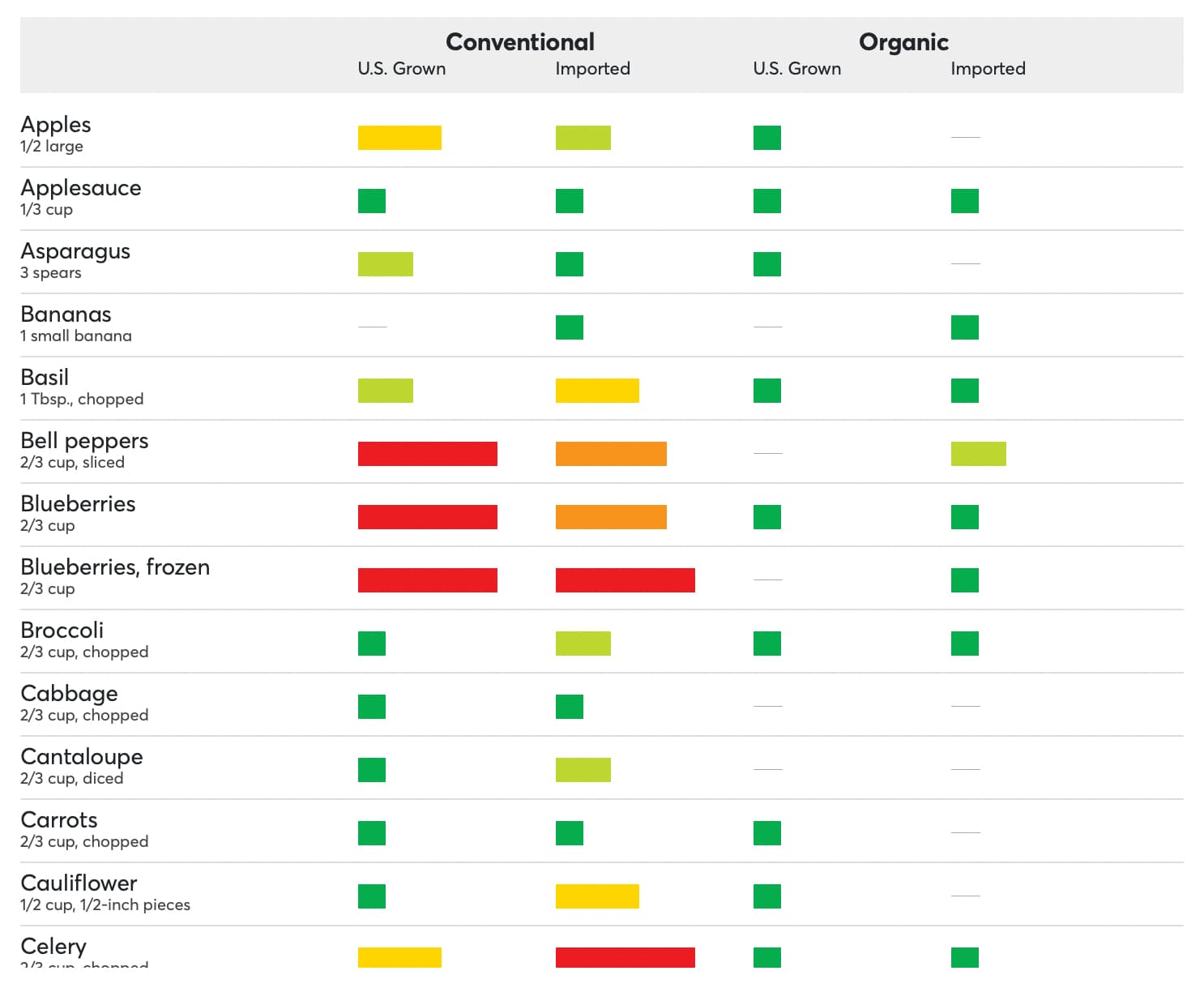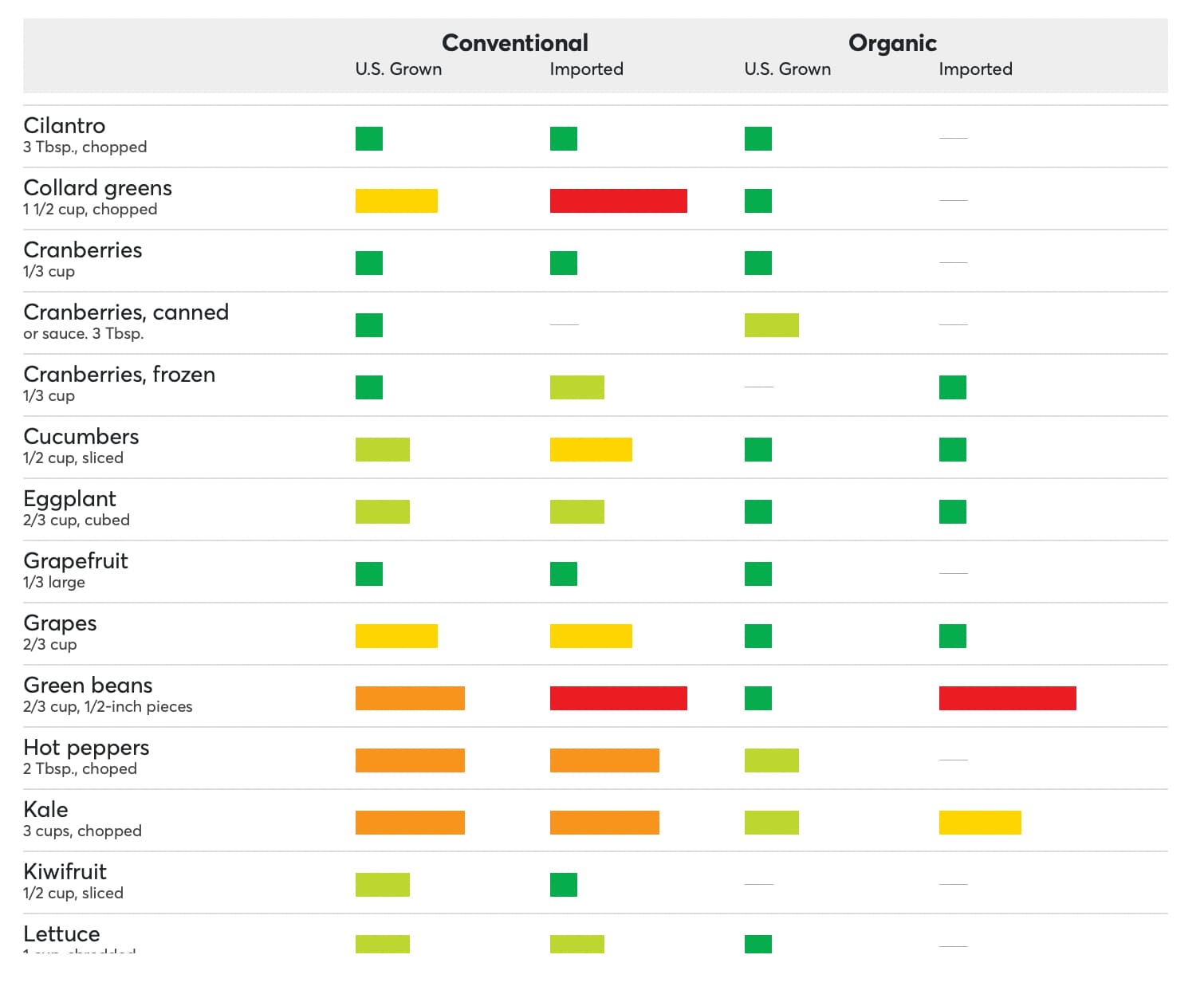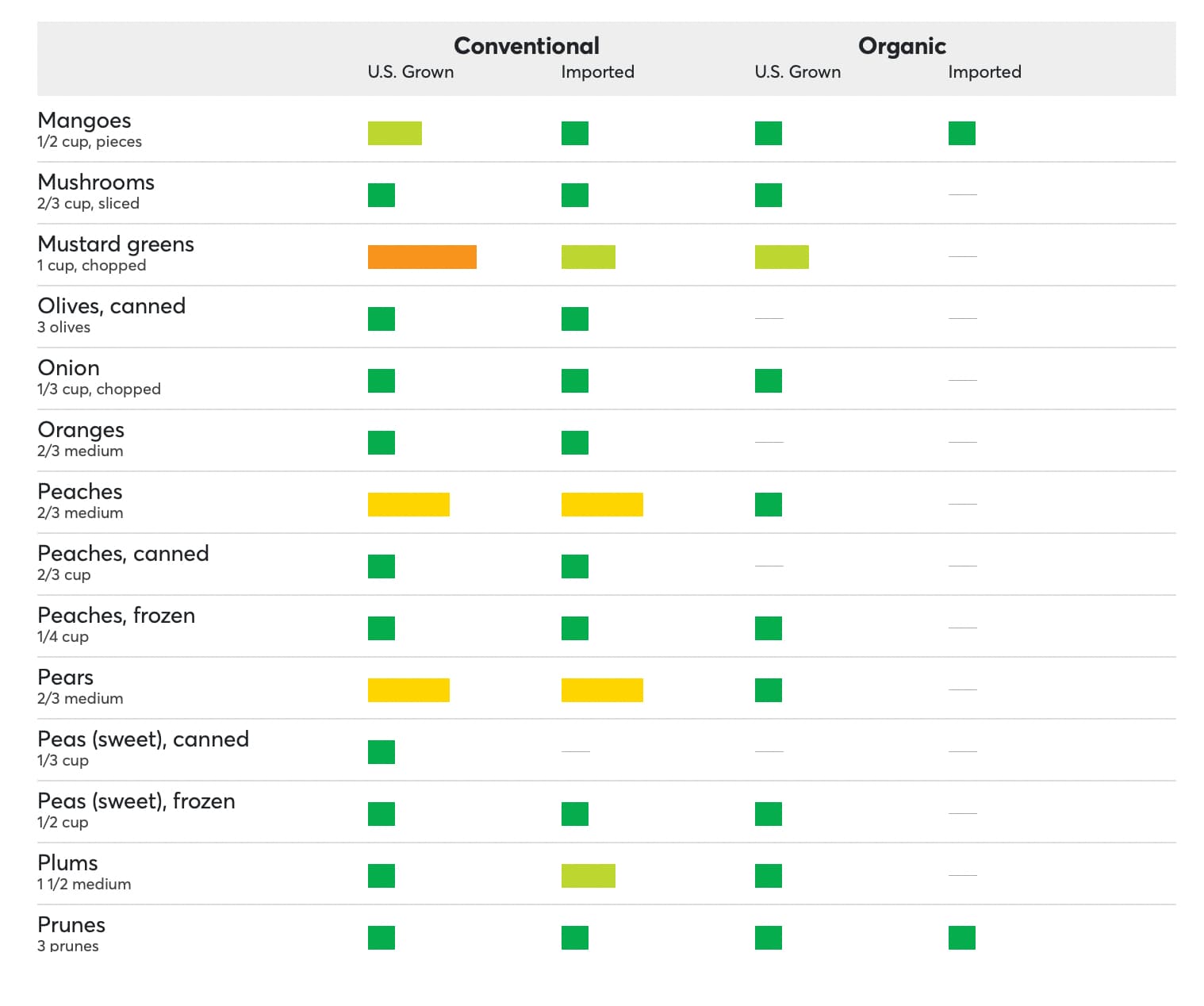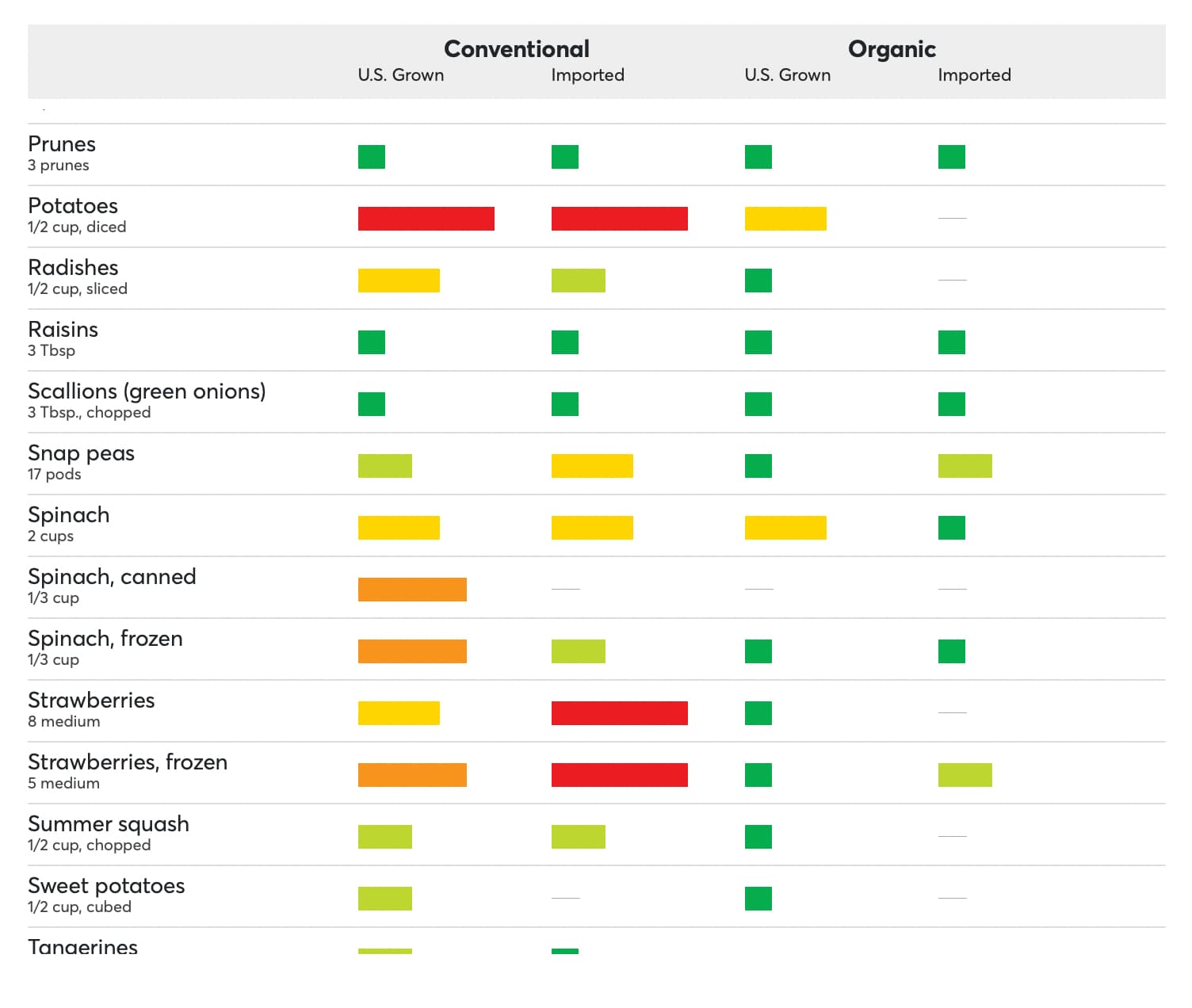This is in the news everywhere today… this is why I try to buy organic in some classes of vegetables and fruits, but even that may be problematic as shown below:
Some of your favorite produce might be dicier to eat than assumed. An analysis from Consumer Reports published Thursday suggests that a substantial portion of commonly sold fruits and vegetables have a significant risk of exposure to dangerous pesticides—around 20%. Bell peppers, watermelons, and blueberries were some of the most exposed produce.
Produce Without Pesticides
Some of our favorite fruits and vegetables carry unhealthy levels of chemicals. CR’s exclusive ratings reveal how to get the benefits from these foods while minimizing your risk.
Consumer Reports, which has tracked the use of pesticides on produce for decades, has seen this pattern repeat itself over and over. “It’s two steps forward and one step back—and sometimes even two steps back,” says James E. Rogers, PhD, who oversees food safety at CR.
To get a sense of the current situation, CR recently conducted our most comprehensive review ever of pesticides in food. To do it, we analyzed seven years of data from the Department of Agriculture, which each year tests a selection of conventional and organic produce grown in or imported to the U.S. for pesticide residues. We looked at 59 common fruits and vegetables, including, in some cases, not just fresh versions but also canned, dried, or frozen ones.
Our new results continue to raise red flags. Pesticides posed significant risks in 20 percent of the foods we examined, including popular choices such as bell peppers, blueberries, green beans, potatoes, and strawberries. One food, green beans, had residues of a pesticide that hasn’t been allowed to be used on the vegetable in the U.S. for over a decade. And imported produce, especially some from Mexico, was particularly likely to carry risky levels of pesticide residues.
…
But CR’s scientists think many EPA tolerances are set too high. That’s why we use lower limits for pesticides that can harm the body’s neurological system or are suspected endocrine disruptors (meaning they may mimic or interfere with the body’s hormones). CR’s approach also accounts for the possibility that other health risks may emerge as we learn more about these chemicals.
“The way the EPA assesses pesticide risk doesn’t reflect cutting-edge science and can’t account for all the ways the chemicals might affect people’s health, especially given that people are often exposed to multiple pesticides at a time,” says CR senior scientist Michael Hansen, PhD. “So we take a precautionary approach to make sure we don’t underestimate risks.”
Take away:
Fruits with risky pesticides
The following fruits were of most concern for Consumer Reports:
Blueberries
About 20% of domestic conventionally grown samples had residue of phosmet, “a pesticide that the EPA considers a particular risk to children,” Consumer Reports says. It’s in the organophosphate class of chemicals.
Conventional frozen blueberries also posed a very high risk, the organization says.
It recommends organic blueberries or organic strawberries as a better choice.
Watermelon
About 3% of domestic conventionally grown samples tested positive for oxamyl, the same chemical found on peppers, at levels “far above” what Consumer Reports considers safe.
“We suggest that if you’re concerned, since it’s a high-risk pesticide, switch to cantaloupe,” Rogers says.
Vegetables with risky pesticides
The following vegetables were of most concern for Consumer Reports:
Bell peppers
Almost half of all domestic conventionally grown samples tested positive for oxamyl — part of the carbamate class of chemicals — or its breakdown product, oxamyl oxime, according to Consumer Reports. The organization warns oxamyl has potential for serious health risks.
It recommends buying organic or eating peppers sparingly, including hot peppers, which CR says also pose a high risk.
Potatoes
Almost all domestic conventionally grown samples had residue of chlorpropham, another carbamate pesticide, Consumer Reports says. Organic potatoes also showed some contamination.
That’s why sweet potatoes are a better choice — they’re low risk, in addition to their excellent nutrition, the organization advises.
Green beans
About 4% of domestic conventionally grown samples had residue of acephate or one of its breakdown products, methamidophos, even though the EPA banned acephate for use on the vegetable in 2011, Consumer Reports says.
Organic green beans grown in the U.S. and snow peas are a better choice.
Kale and mustard greens
It recommends choosing organic kale and mustard greens instead, as well as broccoli, fresh spinach or lettuce.
Full story - open access:
https://www.consumerreports.org/health/food-contaminants/produce-without-pesticides-a5260230325/





